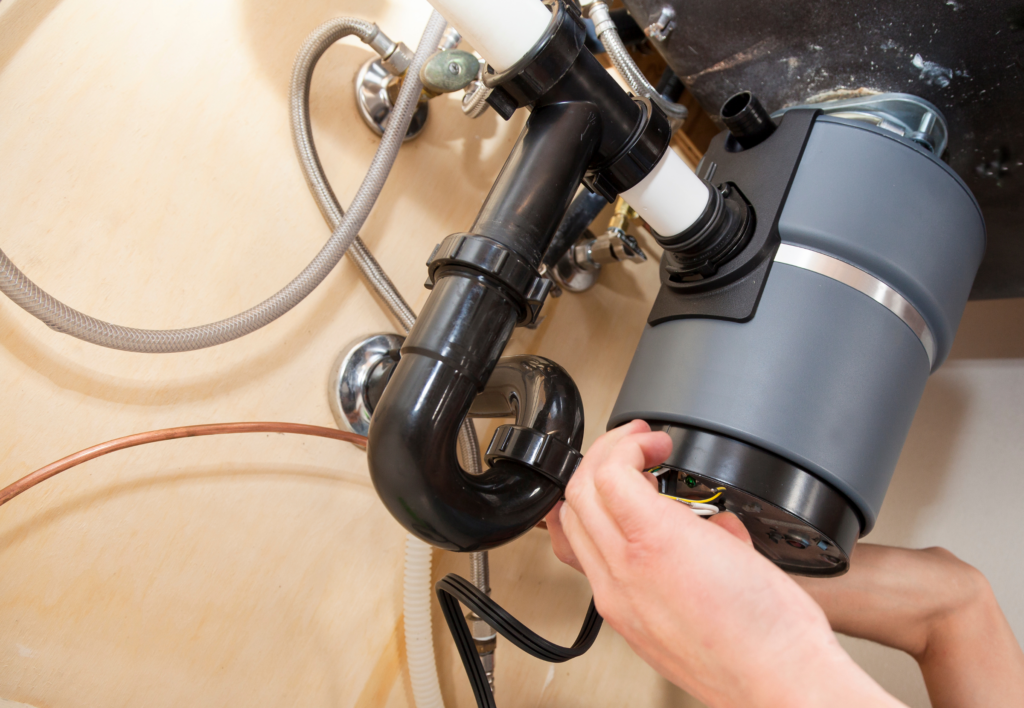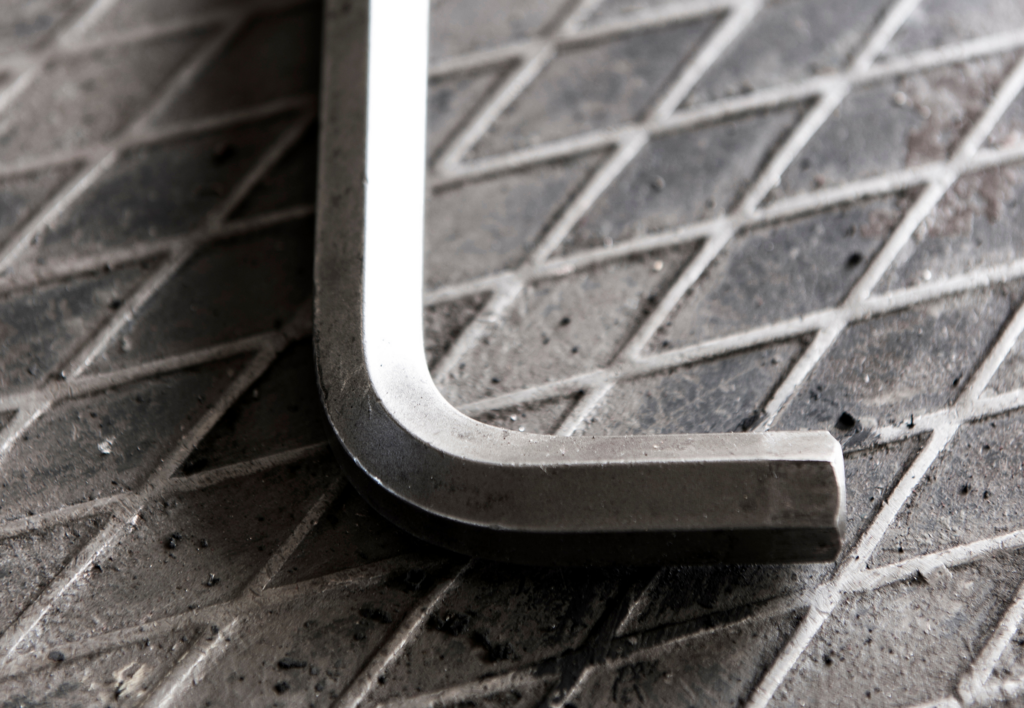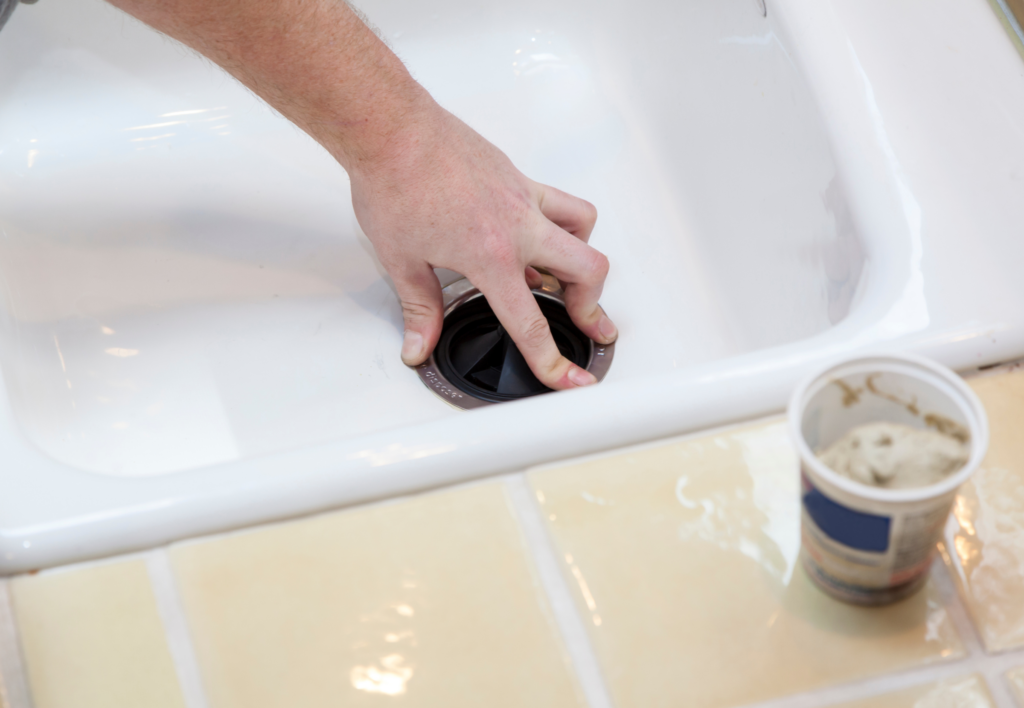Easy Steps to Fix a Jammed Garbage Disposal: DIY Kitchen Maintenance Guide
There are several steps to follow when fixing a garbage disposal jam. The first step is to turn off the power switch and unplug the unit. Next, check if the reset button on the bottom of the disposal needs to be pressed.
If that does not work, try using a quarter-inch hex wrench or dowel rod to clear the jam by turning it back and forth in the center hole at the bottom of the disposal.
Avoid putting your hand inside the disposal; use pliers instead if you need to extract something.
Once you have cleared the jam, press the reset button and turn on the power switch again.
Causes of a Garbage Disposal Jam
A jammed garbage disposal can be a frustrating and inconvenient situation in the kitchen.
Did you know: Over 70% of all garbage disposals will jam at least once in their lifetime!
Understanding the causes behind these garbage disposal problems can help you prevent them from happening in the first place. Garbage disposals can jam due to a variety of reasons, including foreign objects or debris, blocked blades, overloading, or a malfunctioning motor.
- Debris or objects in the disposal blocking the blades
- Overloading
- Malfunctioning motor
Let’s first explore the cause of debris or objects in the disposal.
Debris or Objects in the Disposal Blocking the Blades
One of the primary reasons for a garbage disposal jam is when debris or foreign objects get lodged in the system, blocking the blades and preventing them from spinning. These unwanted items can include food scraps, utensils, small toys, or any other material that mistakenly finds its way into the disposal.
In fact, some experts say that the most common cause of a garbage disposal jam is food waste getting stuck in the blades.
For example, imagine accidentally allowing a spoon to slip down into the drain while washing dishes. It goes unnoticed and ends up causing a blockage in your garbage disposal, preventing it from functioning properly. Over time, food particles, grease, and other debris may also accumulate in the disposal unit, causing the blades to become stuck or not spin freely
If you find a foreign object, such as a spoon or a piece of glass, you should use a pair of pliers or tongs to remove it.
Now that we understand one of the main causes of a jammed garbage disposal, let’s move on to explore another common cause: blocked blades.
Overloading
A garbage disposal can also get jammed if you overload it with food all at once. This is a common mistake that many homeowners make, as they assume that the disposal can handle large amounts of food. However, this isn’t the case. To avoid a jam, it’s best to feed the disposal small amounts of food at a time.
If the jam is caused by overloading, you should remove any excess food or debris from the unit until the disposal will turn on correctly.
Malfunctioning motor
Finally, a malfunctioning motor could also cause a jam in your garbage disposal because it is running at a reduced power level or simply can’t run at all. This can be a frustrating issue to deal with, especially if you rely on your garbage disposal for daily use.
If the jam is caused by a malfunctioning motor, you should check the motor for any signs of damage or wear and tear and go from there. If a malfunctioning motor is the problem, you might end up needing to call a professional to install a replacement motor or, more likely, replace the garbage disposal completely.
Clogged drain or other plumbing issue
This issue is less likely to cause a jam, but a clog in the sink drain further down the line from your garbage disposal can definitely cause problems.
If you are experiencing this problem, your garbage disposal probably works fine but water can’t drain properly and you might have water backing up into the kitchen sink. The first step is to use a plunger to try to clear the clog with suction.
Clogs in the drain connected to the garbage disposal can be tricky to fix though because if a plunger doesn’t work, you’ll likely need to disconnect the pipe from the garbage disposal and then attempt to snake the drain line from there.
What should the normal operation of a garbage disposal look like?
Before diving into the steps to fix a jammed garbage disposal unit, it’s essential to understand the running cycle of this kitchen appliance. This knowledge will help you identify any potential issues and troubleshoot them effectively.
When you turn on the disposal, it should make a humming noise, indicating that the motor is running smoothly. The blades inside the unit should be spinning freely, allowing for effective grinding of food waste. If you notice any deviations from this normal running cycle, such as a lack of sound or an unusual noise like grinding or squealing, it might indicate a jam or another underlying problem.
Keep in mind that safety is paramount during any maintenance work on your garbage disposal. Always ensure that the power switch for the disposal is turned off before attempting to troubleshoot or resolve any issues.
For instance, why is my disposal humming and not working?
If you hear a humming noise but the blades are not turning or if there is no sound at all when you turn on the disposal, it could be an indication of a jam. On the other hand, if you hear grinding or squealing noises, there might be something caught between the blades.
Now that we have a better understanding of the running cycle and possible signs of a jammed garbage disposal, let’s explore some tips for unjamming it.
Fixing a garbage disposal jam: step-by-step instructions
When your garbage disposal becomes jammed, it can be frustrating and inconvenient. However, there are steps you can take to troubleshoot and resolve this issue on your own before calling a plumber for assistance. And,
over 80% of all garbage disposal jams can be fixed by using a combination of the tools and resetting the unit, so you should be able to fix it yourself!
Also, the average time it takes to fix a garbage disposal jam is 30 minutes, so it shouldn’t take long.
1. Hit the Reset Button
First, check if the reset button on the bottom of the disposal needs to be pressed. If you disposal doesn’t seem to be turning on at all (no humming sounds or vibrations) then this is likely the culprit.
Turn off the power switch, press the reset button (often located on the bottom of the garbage disposal), then turn the power switch back on at the outlet. This simple action might be enough to reset the unit and solve the jamming problem.

2. Check for debris and clear it out
If pressing the reset button didn’t fix the issue, it’s likely that an obstruction is causing the jam.
For this step, I recommend turning off power to the garbage disposal at the circuit breaker box, ensuring that the power switch is turned off, and keep your hand outside of the garbage disposal at all times during the process.
Then:
- Use a flashlight to visually inspect the inside of the garbage disposal. You might need to use a screwdriver or pliers to move the rubber splash guard out of the way.
- Pull out any big pieces of debris with the pliers.
- Pay special attention to the garbage disposal blades to see if something has blocked them or locked them in place.
- Look at the small holes on the inside perimeter of the disposal – this is where water and cut up food will be flushed down into the drain system. If a foreign object has gotten stuck in one of those holes, it is common for the blades to get hung up there and lock.
- Once identified, pull out the debris or foreign object with the pliers.
- Turn on the power and check to see if your garbage disposal is working again.
Based on my personal experience, the most common food debris that will cause a lock up or jam in the garbage disposal are:
- Popcorn seeds
- Large seeds or pits from fruits
- Corn husks
- Shells from nuts
- Bones (such as chicken wings)
If you aren’t able to remove the debris or object, move on to the next step.

3. Use an allen wrench (or wrenchette that came with the disposal) to manually loosen the jam
Sometimes you can see a foreign object causing the jam in your garbage disposal but you can’t get it out, even with pliers.
In this case, you can use an allen wrench to manually turn your garbage disposal backward to allow you to remove the object more easily.

Typically, garbage disposals will come new with a little wrenchette attached to the bottom. It might be taped to the casing or it might be clicked into a little fasteners. These are handy because they are guaranteed to be the right size for the job.
Here is what you’ll do:
- Remove the allen wrench, key, or wrenchette from the bottom of the disposal or find one that is the appropriate size.
- Use the allen wrench to manually turn the disposal in the opposite direction of normal use. You might need to ask someone to help you by looking inside the disposal while you turn.
- Once you’ve loosened the area of the jam, go back in with the pliers to pull out the foreign object.
- Fasten the allen wrench back to the bottom of the disposal or make a note of which size wrench you used for next time.
- Turn the power back on to your garbage disposal and test it out.
Think of unjamming a garbage disposal like untangling a knot in a string. You carefully work through each twist and turn until everything is free-flowing again.
And remember, these tips are meant for minor jams and obstructions. If you have tried these methods and the problem persists, it might be time to seek professional assistance.
“I never realized that using a hex wrench or dowel rod could help in unjamming my garbage disposal. I used to panic whenever it got stuck! Thanks for these helpful tips.” – Reader testimonial
When should you call in a professional for your garbage disposal jam?
By following these troubleshooting techniques, you can often restore your garbage disposal’s functionality without resorting to calling a professional plumber service. However, if none of these steps work, it may be time to seek expert help.
- According to HomeAdvisor’s 2020 report, homeowners spend an average of $142 to $199 to hire plumbers for garbage disposal repair services.
- The U.S. Consumer Product Safety Commission reports that emergency rooms treat over 7,000 injuries a year that are related to trash and garbage disposer incidents.
- A study from the University of Michigan found that attempting DIY fixes on household items like garbage disposals could save homeowners up to $200 per project, depending on the complexity and required repairs.
How to properly maintain your garbage disposal to prevent jams
Regular maintenance and prevention practices can significantly extend the lifespan of your garbage disposal while reducing the likelihood of future jams. By incorporating these simple habits into your kitchen routine, you can keep your disposal in top shape:
- Proper Use: Only put approved food waste into your garbage disposal. Avoid grinding hard items like bones or fibrous foods such as celery stalks.
- Running Water: Always run cold water before, during, and after using the disposal to help flush out debris and prevent clogs.
- Small Batches: Feed small amounts of food waste into the disposal at a time rather than overloading it with large quantities.
- Cutting Waste: Cut larger items into smaller pieces before disposing of them, reducing the strain on the unit.
- Cleaning: Regularly clean your disposal by grinding ice cubes, citrus peels, or a mixture of baking soda and vinegar to eliminate odors and remove any built-up residue.
- Maintenance Tips: Periodically check for leaks, tighten connections if necessary, and inspect the blades for signs of wear.
By following these maintenance practices and exercising caution when operating your garbage disposal, you can prevent unnecessary jams and ensure its smooth functioning for years to come.
“I used to struggle with stubborn odors coming from my garbage disposal, even after cleaning it regularly. But ever since I started using the vinegar and baking soda method, it’s made a remarkable difference! Now my kitchen smells clean and odor-free.” – Alice, Homeowner
Additionally, remember to avoid disposing of certain items that can cause damage or obstruct the functionality of your unit.
These include:
- large bones
- fibrous vegetables like celery or corn husks
- grease or oil
- coffee grounds
- eggshells
- pasta
- rice
- fruit pits
Instead, dispose of these items in alternative ways to prevent clogs or potential motor damage.

Implementing a regular maintenance schedule is also vital; this involves physically inspecting the disposal for any signs of wear or leaks. Think of it as taking your car in for routine check-ups to catch any issues before they become major problems. Regularly checking the disposal’s connections, blades, and seals can help identify any potential problems early on.
“Keeping up with routine maintenance has saved me so much headache and money. I recently discovered a small leak in my garbage disposal that could have caused significant damage if left unattended. By promptly addressing it, I prevented a major plumbing disaster!” – Mark, Homeowner
Lastly, be sure to familiarize yourself with your garbage disposal’s manual. Each model may have specific care instructions or troubleshooting steps that are worth following. By adhering to these guidelines, you can ensure proper usage and address minor issues effectively.
Let Us Know How We’re Doing!
Did this expertly prepared resource answer your question?
Do you have another question about home maintenance, home improvement projects, home appliance repair, or something else?
Get more information, send in questions and keep the discussion going by contacting the I’ll Just Fix It Myself company customer service team at at 1-800-928-1490 or Email us at [email protected]
